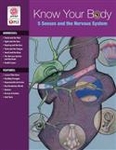SOURCE TBI CHILDREN ADOLESCENTS

Description
Ages:Birth-18
Grades:Birth-Adult
Every child and adolescent who has a brain injury presents with different deficits and has a different course of recovery. Use this book to understand the complex effects of childhood TBI on cognitive, language, and behavioral development; on social and family relationships; and plan effective interventions.
This authoritative text by Drs. Lebby and Asbell is informative and concise without being oversimplified. Lots of illustrations and real-life examples help you understand the main aspects of brain injury in addition to the more subtle features that result from brain damage. It includes two popular evidence-based assessment tools, theLebby-Asbell Neurocognitive Screening Examination for Children(LANSE-C) and theLebby-Asbell Neurocognitive Screening Examination for Adolescents(LANSE-A).
Chapters in the book cover:
- brain anatomy–the parts of the brain and their functions and the cranial nerves and their functions
- brain development and cognition–developmental milestones and an overview of how brain injury affects normal brain and cognitive development
- traumatic brain injury–what happens to the brain after an injury based on the type of trauma, level and number of injuries, and medical complications
- TBI-related language disorders–the primary symptoms of fourteen types of communication/language disorders
- TBI-related frontal lobe disorders–an overview of frontal lobe functions such as executive functions, attention deficits, reasoning, lack of insight, and more
- TBI-related motor, visual, and learning and memory disorders–the terminology of and conditions resulting from damage to the motor cortex, visual cortex, and diffuse damage to the cortex
- general assessment issues–special considerations for testing and the interpretation of test results
- neurocognitive assessment–screening with the:
- Lebby-Asbell Neurocognitive Screening Examination for Children(LANSE-C)
- Lebby-Asbell Neurocognitive Screening Examination for Adolescents(LANSE-A)
- The two screening tools assess these areas: general functioning, level of consciousness, orientation, attention, language, reasoning, memory, object use, visual-spatial ability, visual-motor integration, and visual neglect.
- considerations for formal testing and assessment of general functioning
- recovery issues–processes, predictors, and patterns of recovery; issues in resumption of activities and transitions
- intervention–prioritizing goals, choosing therapy activities, and accommodations for specific deficits
- family issues–helping the family adjust and dealing with attitudes and emotions
Copy or print the client activity pages.
224 pages • 8.5 x 11, softcover book with online access to 77 printable pages in PDF format (printable LANSE-C and LANSE-A protocols and stimulus books) • ©2007
SOURCE TBI CHILDREN ADOLESCENTS








